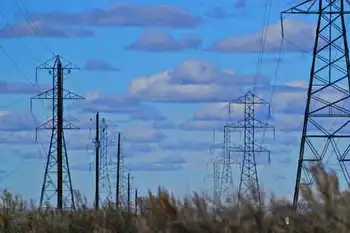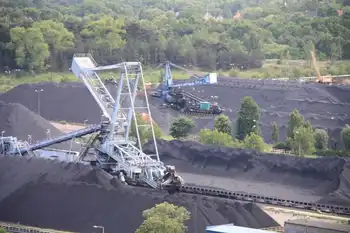Zambian hydroelectric feasibility study complete
By Industrial Info Resources
Protective Relay Training - Basic
Our customized live online or in‑person group training can be delivered to your staff at your location.

- Live Online
- 12 hours Instructor-led
- Group Training Available
Having submitted a report on the study to the government of Zambia, IFC is waiting for the government to decide on the next course of action. The feasibility study was completed at a cost of $46 million.
The KGL hydropower project will be about 65 kilometers upstream of the confluence of the Kafue and Zambezi rivers, and downstream from the 900-MW Kafue Gorge Upper (KGU) hydropower plant. The KGU plant utilizes 400 meters of the available head of 600 meters at Kafue Gorge. The KGL plant will utilize the balance head of 200 meters, and will consist of a dam 120 meters in height, an underground powerhouse, and a tailrace channel.
The Kafue Gorge was first identified in the early 1950s by British consulting firm William Halcrow & Partners, later renamed Halcrow Group Limited, as a potential source of hydropower to cater to the power requirements of Zambia and Zimbabwe, then known as Northern and Southern Rhodesia, respectively. Following the imposition of Federation by Britain in July 1953, the federal government ruled in favor of developing a hydropower plant on the Zambezi River in Kariba, Southern Rhodesia. The decision was made on political grounds and aimed at preventing concentration of assets and related economic activity in Northern Rhodesia.
When Northern Rhodesia attained independence in 1964 and came to be known as Zambia, the government decided to proceed with plans to develop a hydropower plant on the Kafue Gorge with the assistance of Swedish engineering consultants SWECO AB. Consequently, the 900-MW KGU plant was developed and commissioned in 1977, utilizing 400 meters of the available head of 600 meters at Kafue Gorge.
Subsequently, ZESCO Limited, formerly Zambia Electricity Supply Corporation Limited, began to consider an extension to the project based on utilization of the balance head of 200 meters, in order to address increasing demand for power from the domestic mining industry and rural electrification plans, and tap into export opportunities to address power deficit in Namibia and Southern Africa.
In 1995, ZESCO published an updated feasibility study for the proposed extension. The study was financed by the U.S. Trade & Development Agency. The design for the proposed 600-MW KGL plant included construction of a dam 62 meters in height, and the plant was to utilize water discharged to the Kafue River by the KGU facility. The cost of the project was estimated at $430 million.
Although ZESCO successfully mobilized project funds with the assistance of the Development Bank of Southern Africa, the project did not materialize.
The KGL project was revived in 2008 when the Ministry of Energy and Water Development of the Republic of Zambia announced plans to develop hydropower projects in the country through public-private partnerships and bridge the expected power deficit of 150 to 200 MW.
The ministry appointed IFC as the lead adviser for developing the KGL facility as an independent power-producer hydroelectric project with a capacity of 750 MW, and invited expressions of interest from private partners for financing, constructing and operating the plant.
In July 2008, IFC awarded a two-year, $1.5 million contract to environmental engineering, consulting and construction management services provider MWH to undertake technical and economic feasibility studies for the project. The ministry announced that detailed legal, technical, and environmental feasibility studies would be completed by March, and invited interested parties to comment on the ongoing feasibility studies and contribute to project design.
The ministry also announced that it would undertake prequalification of project developers at a later stage as part of the bidding process. Donor funding for legal consultation fees and the consulting contract awarded to MWH was provided by the DevCo Trust Fund of the World Bank.
In January, IFC announced that it had received expressions of interest for the project from 15 firms. Those named included Alstom Power and Copperbelt Energy Corporation plc, in a joint venture with Glencore International AG, China Gezhouba Group Company Limited, CMC Di Ravenna, International Mineral Resources BV, Noesis Strategic Consulting Services, Sinohydro Corporation, Sithe Global Power LLC, SN Power, VINCI SA, and ZESCO among the firms who submitted expressions of interest. It was later reported that some of these firms withdrew their interest due to the global financial crisis.
There also were reports of IFC putting the project on hold and calling on the government of Zambia to enhance funding support with concessionary terms to render the project more economically feasible. IFC also recommended downsizing of the project from 750 MW to 600 MW on environmental grounds, and called on the government to define its stake in the project.
Peter Mumba, permanent secretary at the Ministry of Energy, reaffirmed the government's commitment to the project and said that electricity tariffs would be adjusted in the coming years to attract investments in the power sector. Mumba also indicated that Zambia would like to use the full potential of the KGL facility, and that downsizing to 600 MW was undesirable. He also said that the government would clarify its stance before floating tenders for project implementation.
The KGL project is expected to entail a construction time of five years. It would include development of a 5-kilometer transmission line connecting the KGL power station to the switchyard for the existing KGU power plant. In a related development, ZESCO announced in March this year that it has completed the rehabilitation of the 900-MW KGU facility at a cost of $85 million and that the capacity of the plant has been augmented to 990 MW.
Zambia currently has 1,670 MW of installed hydropower generating capacity. Hydropower accounts for nearly 98% of the total power generated in the country, while small diesel generators account for the remainder. It is estimated that about 98% of rural and 60% of urban dwellers in the country have no access to electricity. Power consumption is estimated to have grown 70% in the past five years, and demand from the domestic mining industry is slated to grow two-fold by the end of this year.











